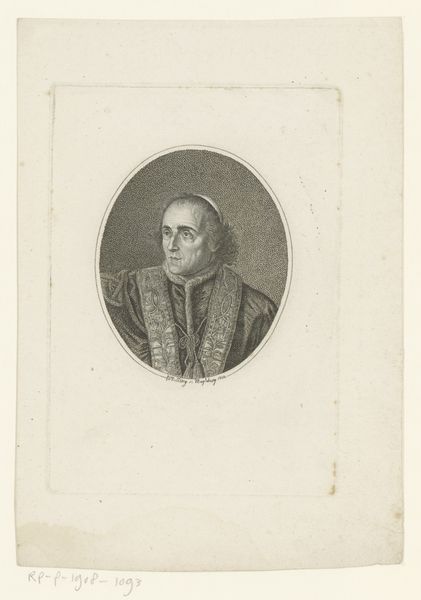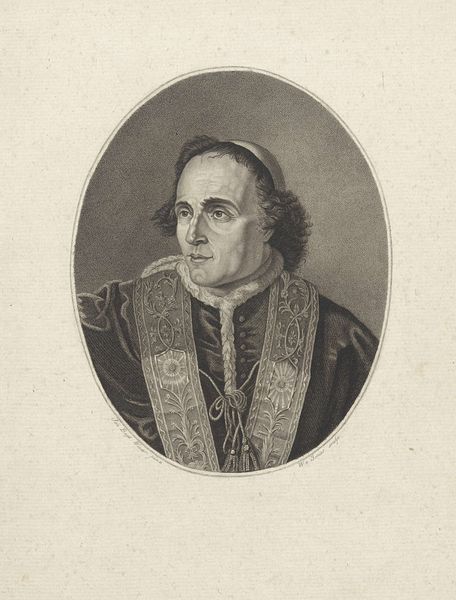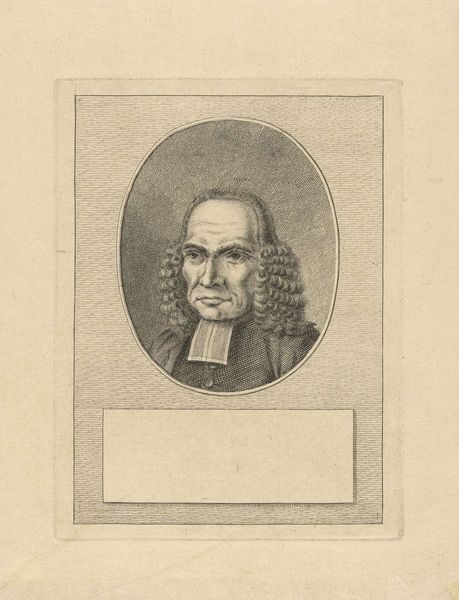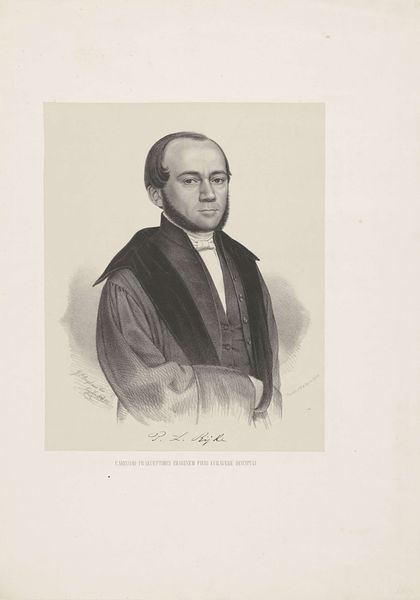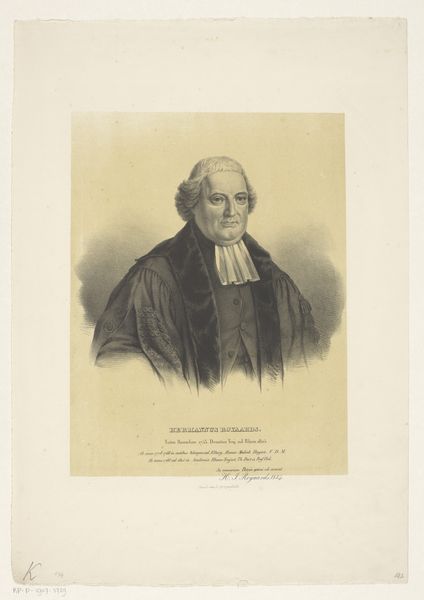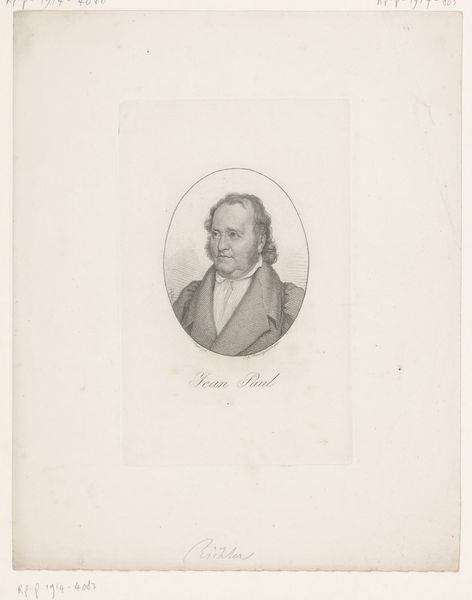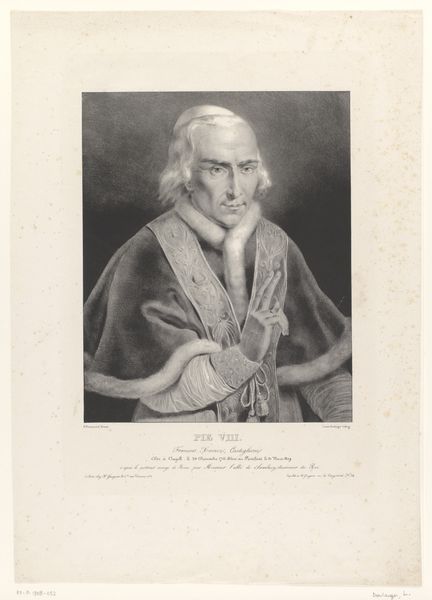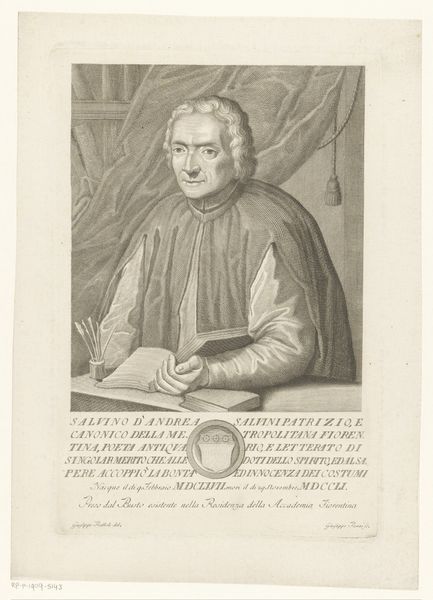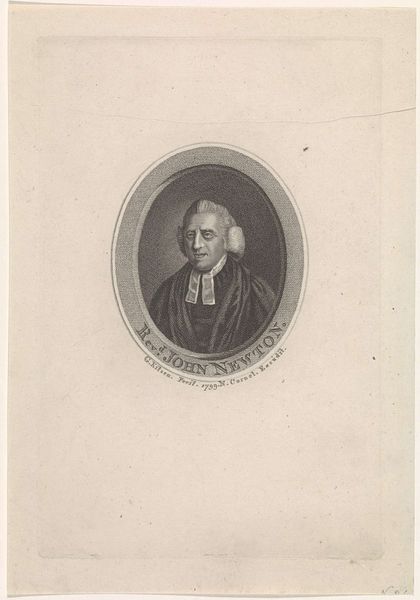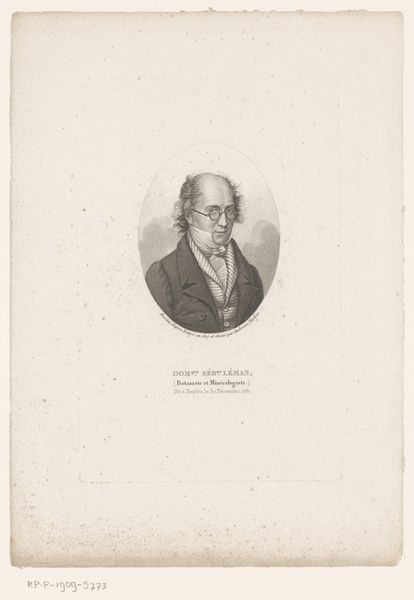
Dimensions: height 308 mm, width 245 mm
Copyright: Rijks Museum: Open Domain
Curator: This is Martinus van Looyen's "Portret van Pius VII," an engraving created sometime between 1806 and 1814. It strikes me immediately; it feels remarkably modern despite depicting a figure from the early 19th century. The crispness of the lines and the contrasting grayscale give it an almost photographic quality. Editor: My first thought is somber; his expression and the limited palette evoke a sense of restrained authority and perhaps even resignation, given the historical context. Van Looyen was working during a tumultuous period for the Papacy, marked by Napoleon's dominance. How does the choice of engraving – a process involving meticulous labor and replication – affect our reading? Curator: Absolutely. The medium is vital here. Engraving, unlike painting, is an inherently reproductive technique, implying wider distribution and a public audience. The print format democratizes access to the image of the Pope, though still, the creation involves skilled craftsmanship. What were the typical printmaking processes and workshops like at that time? Did van Looyen operate independently or within a larger publishing house? This would speak to the dissemination of papal imagery and its role in shaping public perception. Editor: And crucially, whose perception? Who would have been able to access such prints, given literacy rates and socioeconomic barriers? Also, Pius VII's papacy was deeply intertwined with political upheaval and shifting alliances. His capture and imprisonment by Napoleon must have weighed heavily, both on the man himself and the imagery produced of him. To what extent does the engraving, with its austere presentation, acknowledge or obscure this political reality and how does it solidify the role of Pope? Curator: Precisely. The tension between the objective medium of printmaking and the highly symbolic subject matter creates a fascinating dynamic. Each line is deliberately etched, contributing to a controlled and reproducible image of power. Yet the inherent limitations of the medium – the grayscale, the flatness – perhaps unintentionally humanize Pius VII. Editor: Indeed. Van Looyen’s print exists as a cultural object deeply rooted in the sociopolitical environment. Thinking about audience and consumption transforms this work from simply a portrait into a piece of evidence. Curator: Considering the conditions of its creation reveals that much! Editor: It allows us to reconsider power as something constructed and challenged, even within seemingly straightforward portraiture.
Comments
No comments
Be the first to comment and join the conversation on the ultimate creative platform.
